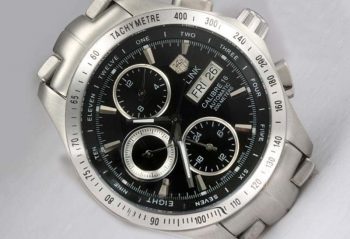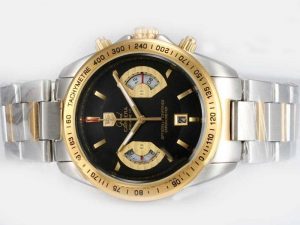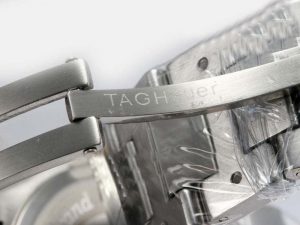
In 1914, TAG Heuer released their first wristwatch model, boasting the same precision and reliability as their pocket watches. However, they would continue to be a brand that focused on pocket watches and stopwatches until the 1930s. A decade later, the company began to include the TAG Heuer name on the dials of all the products they manufactured. This helped a lot to increase TAG Heuer's popularity, which eventually led to higher sales and more brand awareness.
The 1940s also came with a lot of changes for TAG Heuer. It was during this decade that they chose to step up their game by delving into other innovative timepieces that catered to a wider range of people, such as athletes, jet pilots, etc. This was cemented with the introduction of the TAG Heuer Solunar, with the usual solar and lunar times and more features. 
 Since then, TAG Heuer has continued to create innovative and functional replica watches that would eventually become a pioneer of the modern collection. Some of the famous models they produced were the Seafarer, Solunagraph, and Twin-Time watch.
From that point on, TAG Heuer focused on producing what they did best - chronographs, stopwatches, and Motorsports timing devices. By 1962, they finally introduced the TAG Heuer Autavia Chronograph, which was based heavily on the features of TAG Heuer's previous racing and pilot's watches. This was the first model of what is known today as the Autavia collection, and in 1963 they released the TAG Heuer Carrera, which drew inspiration from the excitement and thrill of racing.
In the following years, replica TAG Heuer further consolidated its reputation in motor racing by sponsoring the Ferrari Formula, One team. This made TAG Heuer the first non-automotive brand to be featured in Formula One vehicle. As time went on, TAG Heuer continued to make its mark on the racing world while striving to create classic and avant-garde timepieces. 1979 saw the eventual release of their catalog dedicated to diving fake watches, the precursor to today's Aquaracer collection.
Since then, they have been able to consistently create watches that perfectly capture the essence of movement and complexity. Many people have seen and recognized TAG Heuer's progress, development, and decades of commitment to Swiss craftsmanship. Clearly, LVMH shared the same sentiments, which is why they officially acquired TAG Heuer in 1999.
As of 2021, the brand has seven collections in active production, namely the following: TAG Heuer Connected, TAG Heuer Carrera, TAG Heuer Formula 1, TAG Heuer Aquaracer, TAG Heuer Monaco, TAG Heuer Autavia, and TAG Heuer Link.
Since then, TAG Heuer has continued to create innovative and functional replica watches that would eventually become a pioneer of the modern collection. Some of the famous models they produced were the Seafarer, Solunagraph, and Twin-Time watch.
From that point on, TAG Heuer focused on producing what they did best - chronographs, stopwatches, and Motorsports timing devices. By 1962, they finally introduced the TAG Heuer Autavia Chronograph, which was based heavily on the features of TAG Heuer's previous racing and pilot's watches. This was the first model of what is known today as the Autavia collection, and in 1963 they released the TAG Heuer Carrera, which drew inspiration from the excitement and thrill of racing.
In the following years, replica TAG Heuer further consolidated its reputation in motor racing by sponsoring the Ferrari Formula, One team. This made TAG Heuer the first non-automotive brand to be featured in Formula One vehicle. As time went on, TAG Heuer continued to make its mark on the racing world while striving to create classic and avant-garde timepieces. 1979 saw the eventual release of their catalog dedicated to diving fake watches, the precursor to today's Aquaracer collection.
Since then, they have been able to consistently create watches that perfectly capture the essence of movement and complexity. Many people have seen and recognized TAG Heuer's progress, development, and decades of commitment to Swiss craftsmanship. Clearly, LVMH shared the same sentiments, which is why they officially acquired TAG Heuer in 1999.
As of 2021, the brand has seven collections in active production, namely the following: TAG Heuer Connected, TAG Heuer Carrera, TAG Heuer Formula 1, TAG Heuer Aquaracer, TAG Heuer Monaco, TAG Heuer Autavia, and TAG Heuer Link.